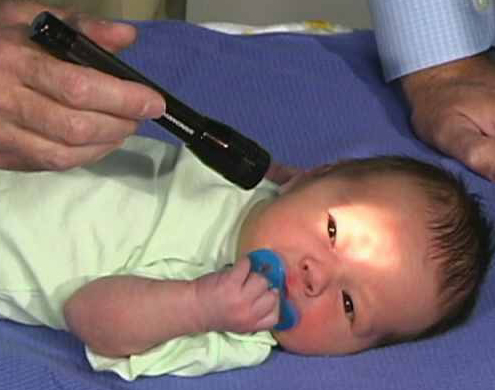A new test may help early diagnosis.
For all parents, autism is certainly a dreadful spectrum that one prefers to avoid thinking about, yet when one has some suspicion or familiarity with the disease, an early diagnosis can be a decisive condition for the best possible management of the therapeutic course of action suitable for reducing, if not eliminating, the negative impact of this pathology on the child's and later the adult's quality of life.
This is why an article published in May 2018 in Nature Communicationin which the results of a study by a group of researchers from Uppsala University (Sweden) were presented, according to which there is an important connection between pupil reflexes and the likelihood of manifesting autism disorders.
Autism or autism spectrum syndrome is a particularly complex developmental disorder, which is diagnosed from behavioural signs that manifest in the first years of life.
 What should alarm parents?
What should alarm parents?
For many years, autism was traced back to a set of symptoms related to social communication, but recently scientists have developed a new perspective that locates the first signs of autism in the basic processes of brain development.
Therefore, repetitiveness of actions, difficulty in concentration, lack of reaction to stimuli, lack of interest in play, lack of gestures, and a tendency towards social isolation, which manifest themselves in children between 15 and 18 months of age, may be the first indicator.
In the first years of life, moreover, the structure of the brain is extremely plastic and, in the presence of an early diagnosis of autism, one could try to 'shape' the course of later development.
The research at Uppsala University involved a group of 187 infants aged around 10 months, of whom 147 had siblings who had already been diagnosed with autistic disorder and 40 without siblings with the condition. The young patients were monitored for the first three years of life and 29 were positively diagnosed with autism.
Already in these patients, abnormalities in the behaviour of the pupils were recorded in the first year of age: they showed greater hyperactivity and greater constriction on exposure to light.
The pupillary reflex to light is a basic regulatory mechanism that controls the amount of light reaching the retina. Infants diagnosed with autism at three years of age constricted their pupils more than normal children. In addition, the more intense the pupillary hyper-reactivity, the more acute were the subsequent symptoms of autism.
This test, which is relatively simple to carry out, could be particularly important in contributing to an early diagnosis of autism spectrum syndrome, although one must weigh up the risks of 'false positives', which could be determined by considering only the data recorded on pupil behaviour. When such reactions occur, it is a good idea to carry out more in-depth analyses before identifying an ad hoc behavioural therapy: abnormal pupil movement could, in fact, also be associated with other disorders unrelated to autism.
Reference
- Nyström P, Gliga T, Nilsson Jobs E, Gredebäck G, Charman T, Johnson MH, Bölte S, Falck-Ytter T. Enhanced pupillary light reflex in infancy is associated with autism diagnosis in toddlerhood. Nat Commun. 2018 May 7;9(1):1678. doi: 10.1038/s41467-018-03985-4.
- Bosl WJ, Tager-Flusberg H, Nelson CA. EEG Analytics for Early Detection of Autism Spectrum Disorder: A data-driven approach. Sci Rep. 2018 May 1;8(1):6828. doi: 10.1038/s41598-018-24318-x.
Dr. Carmelo Chines
Direttore responsabile
